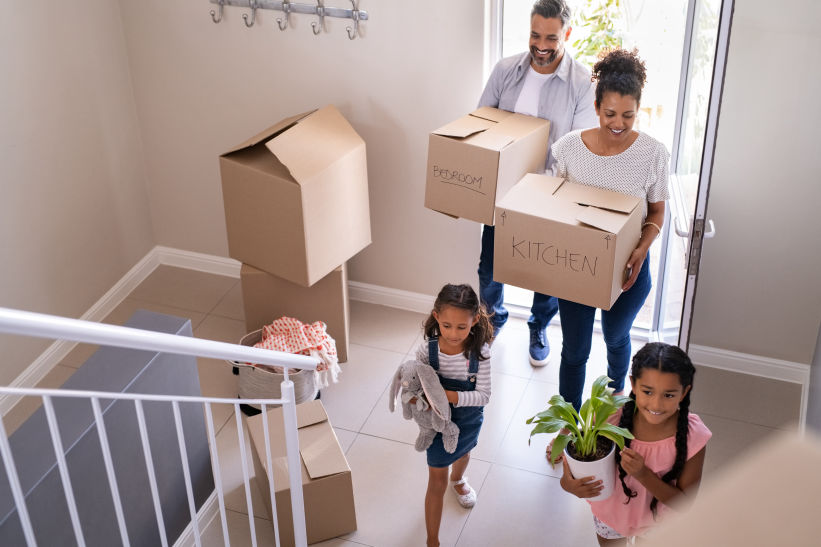


With your $475,000 annual compensation as a cardiac anesthesiologist at Temple, you'll enjoy a lifestyle that would require $650,000–$750,000 to match in New York, Boston, or San Francisco. Philadelphia combines big-city amenities with manageable costs, allowing you to build wealth while enjoying an exceptional quality of life.
According to Sperling's Best Places, Philadelphia’s cost of living index is 101.2, nearly on par with the national average (100), yet it offers the benefits of a major metro. In contrast: San Francisco = 180, New York = 169, Boston = 150, DC = 140. That means your income stretches further here—more savings, more investing, and more experiences.
Housing is where Philadelphia’s financial advantage shines. The median home price is ~$275,000. For $400,000–$600,000, you can buy a beautiful home in a great neighborhood—less than half the cost of Boston, and a fraction of SF or NYC.
Pennsylvania's flat 3.07% state income tax is among the lowest in the region—compared to 10%+ in NY, NJ, and CA. Even with Philadelphia’s 3.79% wage tax for residents, the total tax burden remains well below what you'd pay in high-tax cities.
From groceries to dining to utilities, Philadelphia’s daily costs remain modest. A night out, concert tickets, or museum visit won't break your budget—making culture and leisure accessible, not exclusive.
In Philadelphia, a $475,000 income allows you to own a $500,000 home, save aggressively, travel comfortably, and still enjoy discretionary spending. In San Francisco or New York, that same income would barely cover housing and taxes, leaving little for savings or lifestyle upgrades.
Philadelphia: 15–20% of income goes to housing, $75,000/year savings, stress-free lifestyle.
San Francisco: 35–45% for housing, higher state taxes, +$10,000/year in everyday expenses.
The difference: $50,000–$75,000 in extra disposable income annually—not from working more, but from choosing the right city.
This financial margin gives you something most physicians lack: freedom and flexibility. You're not tied to an expensive lifestyle or forced to overwork to stay afloat. You can take academic sabbaticals, reduce hours, support your partner's career, or invest in your children’s education without financial anxiety.
Your spouse can pursue meaningful work rather than high-paying jobs out of necessity. You can enjoy private school options, build generational wealth, and maintain a healthy work-life balance—all made possible by Philadelphia’s sustainable cost structure.
In short, Philadelphia provides what ambitious physicians need: world-class career opportunities paired with financial freedom that allows for personal, professional, and family flourishing.
With your $475,000 annual compensation, you'll discover housing in Philadelphia that would be financially unattainable in other major cities—historic homes, spacious suburbs, and skyline condos all at prices that keep housing a comfortable part of your budget. A $500,000 home purchase would cost around $3,200/month, just 15% of your gross income. In San Francisco, that same home would cost $1.8–$2 million, consuming 35–40% of your income.
Philadelphia's urban neighborhoods offer walkability, historic charm, and vibrant culture—at a fraction of NYC or SF prices. Whether it’s the elegance of Rittenhouse Square or the creative energy of Fishtown, you can own in vibrant, authentic communities.
Urban neighborhoods are typically 15–25 minutes from Temple via car. Some physicians use SEPTA’s Broad Street Line for public transit. You’ll maintain short commutes with full access to restaurants, arts, and city life.
Inner-ring suburbs offer space, stability, and schools while remaining close to Center City. Many are within 25–30 minutes of Temple, offering an ideal balance of convenience and comfort.
The Main Line is synonymous with top-tier schools, gracious homes, and professional networks. It features train access to Center City and homes ranging from $500,000 to $2 million+.
North and northwest suburbs offer both affordability and exclusivity. Blue Bell, Ambler, and Fort Washington provide strong public schools and proximity to Temple. Gladwyne offers ultra-luxury living.
For greater space and value, explore Delaware and Chester Counties. These areas combine excellent schools, character, and affordability with manageable commutes.
Philadelphia boasts elite private schools such as The Haverford School, Agnes Irwin, Germantown Academy, and more. Tuition ranges from $35,000–$45,000/year, or 7–9% of your gross income per child—affordable on your salary.
Many physicians choose public schools in top-rated districts to prioritize college savings or other goals. But Philadelphia gives you real choice based on educational values, not necessity.
Philadelphia's housing market is professional, transparent, and rational. Unlike SF or Boston, it rarely involves bidding wars or absurd over-asking deals.
Philadelphia Scenario: Buy a $500,000 home with 20% down. Your monthly payment (~$3,200) is just 15% of your $30,000/month gross income. You keep $26,800/month for savings, spending, and freedom.
San Francisco Scenario: That same home costs $1.8M+. You’d need a $360,000 down payment and pay $11,000/month—37% of your income. You’d also lose $2,000+ monthly in extra state taxes. Net result: $20,000/month less flexibility.
Over a 30-year career, this adds up to $6–8 million in additional wealth. That’s the difference between retiring early and working forever. In Philadelphia, you can live well and build wealth—a combination rarely possible elsewhere.



Philadelphia's safety profile demands honest discussion rather than oversimplified narratives that either dismiss legitimate concerns or paint the city as uniformly dangerous. Like most major American cities, Philadelphia includes neighborhoods with dramatically different safety profiles—from areas where residents walk freely at any hour to those experiencing significant violent crime. As a physician, you deserve accurate context about both the safe neighborhoods where you'll likely live and the challenged areas you'll encounter professionally at Temple University Hospital.
Philadelphia’s crime rates exceed national averages, especially for violent crime. The city’s violent crime rate is approximately 1,000 per 100,000 residents—roughly double the national average of 500. Property crime also exceeds national norms. However, these challenges mirror those in many urban centers such as Baltimore, St. Louis, and parts of Chicago. Urban academic centers often serve communities impacted by systemic issues like poverty, disinvestment, and gun violence.
The neighborhoods where most physicians live offer safety levels comparable to affluent suburbs nationwide. Areas like Rittenhouse Square, Society Hill, Chestnut Hill, and Main Line suburbs experience minimal violent crime. Property crime (e.g., package theft) is the most common concern—an annoyance, not a threat.
Temple University Hospital is located in North Philadelphia, a community facing significant safety challenges. Gun violence, poverty, and drug-related crime are real concerns. However, Temple maintains robust security with patrols, escort services, and monitored walkways. Thousands of healthcare workers, students, and faculty commute here daily with established safety protocols.
Philadelphia traffic requires defensive driving. Expect urban congestion, aggressive drivers, and complex intersections. Use hospital parking structures and avoid leaving valuables in your vehicle. Commutes via Broad Street, Roosevelt Boulevard, or I-76 are typical depending on where you live.
Public and private schools in the areas physicians live uphold strong safety standards. Schools have controlled access, security personnel, and emergency protocols. Private institutions such as The Haverford School, Agnes Irwin, Episcopal Academy, and others offer secure, welcoming environments without feeling restrictive.
The city maintains comprehensive EMS, police, and fire services. Temple and other hospitals have professional security teams trained in emergency response, law enforcement collaboration, and campus safety. Your work environment will meet standards common to academic medical centers in urban settings.
Philadelphia's safety profile is consistent with urban academic centers nationwide. If suburban tranquility is your top priority, practicing in North Philadelphia may not align with your goals. But if you're willing to engage thoughtfully with an underserved community, the rewards of practicing at Temple—professional development, clinical depth, and impact—can outweigh the trade-offs.
Comparable institutions in Baltimore (Johns Hopkins), Chicago (UChicago Medicine), and Detroit or Cleveland operate in similar environments. Physicians at these centers also navigate safety concerns in exchange for fulfilling academic careers.
Physicians living in Philadelphia follow simple, effective routines to stay safe:
Philadelphia demands a clear-eyed view of urban safety. The city presents real challenges—but also safe, vibrant neighborhoods where your family can thrive. Temple offers a rare professional opportunity for physicians committed to urban academic medicine. Whether this aligns with your priorities depends on how you weigh professional growth vs. safety concerns.
With informed choices and practical awareness, you can build a secure, fulfilling life in Philadelphia—one grounded in authentic community engagement, academic impact, and meaningful medical practice.
